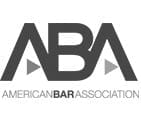II. THE NEW BLENDED MILITARY RETIREMENT SYSTEM (BMRS)
The following is the second of a 4 part series on the changes you need to be aware of in order to stay up to date on the laws affecting Military Divorce, as presented by Janice Boback at the National Business Institute Continuing Legal Education for Professionals in July 2018.
Table of Contents
- The Modernized Retirement System for Service Members Entering in 2018
- Grandfathered Clause and Opt-In Election
- Blended Retirement System Differences
- Thrift Savings Plan
- Retired Pay After At Least 20 Years On Active Duty
- Lump Sum Provision under the Blended Retirement System
- Disability Compensation and the Lump-Sum Option
- Blended Retirement System and Divorce
The Modernized Retirement System for Service Members Entering in 2018
The Modernized Retirement System applies to any new Service Members coming into the military in the year 2018.
Already Retired: No change
New Service Members: The New Law
Others: Choice (old or new)
The Fiscal Year 2016 National Defense Authorization Act created a new military retirement system that blends the traditional retirement pension with the Service Members’ Thrift Savings Plan account (a defined contribution account). The new Uniformed Services Blended Retirement System (BRS) went into effect on January 1, 2018. The decision to opt-in is irrevocable and Service members opting in will begin receiving matching government contributions effective the first pay period that begins on after the day the member opts into the BRS. Service members do not need their spouse to agree with the decision to opt in.
Service members who retire after at least 20 years of military service (20 qualifying years for the National Guard and Reserve), their retirement remains predominantly a defined benefit in which the service member will get monthly retired pay. Under BRMS, the service member’s monthly retired pay will be calculated with a 2.0 percent multiplier (in lieu of the 2.5 percent under the legacy High-3 system), times the average of the service member’s highest 36 months of basic pay.
Grandfathered Clause and Opt-In Election
For those military members who were serving as of December 31, 2017, they are “grandfathered” in under the traditional retirement pension system and will not be automatically switched over to the Blended Retirement System. However, military members with fewer than 12 years since their date of entry into the service – PEBD- (Pay Entry Base Date) and reservist who have accrued fewer than 4,320 retirement points as of December 31, 2017 will have the option to opt into the Blended Retirement System. This opt-in election period for the Blended Retirement System is now open and runs from January 1, 2018 through December 2018, 2018.
Blended Retirement System Differences
The primary difference between the Blended Retirement System and the traditional military retirement system is that the BRS adjusts the years of service multiplier from 2.5 percent to 2.0 percent for calculating monthly retired pay. Also, the BRS includes automatic government contributions of 1 percent of basic pay and government matching contributions of up to an additional 4 percent of basic pay to a service member’s Thrift Savings Plan (TSP) account. In addition, there is a continuation pay provision, which is a direct cash payout (like a bonus), in return for additional obligated service. Changes to the Uniform Services’ retirement system went into effect January 1, 2018.
Thrift Savings Plan
BRS includes a Thrift Savings Plan (TSP) and that portion is a defined contribution retirement savings and investment plan that offers the same type of savings and tax benefits that many private companies offer their employees as a 401(k). The government provides automatic and matching contributions to the military members TSP accounts. Automatic 1 percent and matching contributions up to an additional 4 percent. Service members must have at least two years of service in order to be vested in the government’s automatic 1 percent contributions and associated earnings. The government maximum contribution is 5% as long as you are contributing 5%
You contribute 0%
1% auto contribution
0% Match
Total = 1%
You contribute 1%
1% auto contribution
1% Match
Total = 3%
You contribute 2%
1% auto contribution
2% Match
Total = 5%
You contribute 3%
1% auto contribution
3% Match
Total = 7%
You contribute 4%
1% auto contribution
3.5% Match
Total= 8.5%
You contribute 5%
1% auto contribution
4% Match
Total = 10%
Retired Pay After At Least 20 Years On Active Duty
BRS does not change any of the existing rules about when the military retired pay defined benefit (pension) begins. If you served at least 20 years on active duty, retired pay generally begins the first day of the first month following your retirement. If you served at least 20 qualifying years of service in the National Guard or Reserve, eligibility to receive retired pay generally begins when you reach age 60. This age of eligibility for retired pay may be reduced for members of the National Guard and Reserve who have certain qualifying active duty service performed after 2008.
Lump Sum Provision under the Blended Retirement System
Lump sum refers to a portion of the monthly retired pay a service member receives upfront after serving 20 or more years (or 20 qualifying years in the National Guard and Reserve) and retiring with a regular or non-regular (reserve) retirement. Therefore, the lump sum is only available for those that earn a regular or non-regular retirement. Members who retire with a disability retirement are not eligible to elect a lump sum.
The lump sum provision of BRS gives service members choices at retirement. A service member may choose to receive either 25 percent or 50 percent of the discounted present value of a portion of their future retired pay, in exchange for reduced monthly retired pay. Monthly retired pay returns to the full amount when the service member reaches full Social Security retirement age, which for most is age 67. No such lump sum option exists under the legacy, High-3 military retirement system. it is not a requirement the service member’s spouse concurs with selection of the lump sum.
Disability Compensation and the Lump-Sum Option
For most members retiring under BRS, there will be no impact to their eligibility to receive VA disability compensation, Combat-Related Special Compensation (CRSC), or Concurrent Retirement and Disability Pay (CRDP). However, if a service member covered by BRS elects the lump-sum option, there may be an impact to his or her ability to receive some or all of his or her VA disability compensation due to the law requiring an offset of the retired pay that has already been received via the lump sum. Those with CRSC-qualifying disabilities will still be able to receive CRSC even if they elect a lump sum. Those qualified for CRDP will be able to receive VA disability compensation and military retired pay without offset.
Blended Retirement System and Divorce
A service member’s pension under the BRS is similarly subject to a divorce decree as it is under the regular retirement plan.
This is the second installment of Janice Boback’s 4 part Military Divorce Series covering the latest changes affecting Military Divorce. If you have questions about military divorce or the unique aspects of divorce when it involves a member of the armed services, we can help. Contact us today and let our military divorce expertise guide you through this complicated time.

















